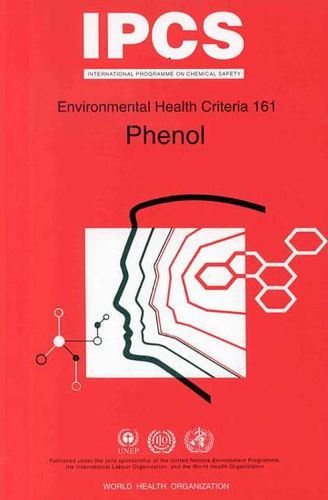Readings Newsletter
Become a Readings Member to make your shopping experience even easier.
Sign in or sign up for free!
You’re not far away from qualifying for FREE standard shipping within Australia
You’ve qualified for FREE standard shipping within Australia
The cart is loading…






Evaluates risks to human health and the environment posed by exposure to phenol a constituent of coal tar formed during the natural decomposition of organic materials. Phenol is the basic feedstock from which a number of commercially important materials are made including resins bisphenol A caprolactam alkyl phenols and chlorophenols. The most important environmental emissions result from the use of phenolic resins. The presence of phenol in liquid manure and its formation following the atmospheric degradation of benzene may contribute significantly to atmospheric levels. The most extensive section summarizes toxicity data from studies in laboratory animals and in vitro test systems including special studies of neurotoxicity myelotoxicity immunotoxicology and biochemical effects. Neurotoxicity liver and kidney damage respiratory effects and growth retardation were identified as the main effects of short-term exposure. An evaluation of effects on human health draws upon case reports following accidental or intentional ingestion outbreaks of poisoning following the accidental contamination of drinking-water and studies in occupationally exposed workers. While available data do not suggest a strong potential for cumulative health effects following chronic exposure the report concludes that accidental high exposure can cause a number of local and systemic effects. Evidence of genotoxicity and inadequate studies of carcinogenic potential remain areas of concern. Concerning risks to the environment the report cites evidence of toxicity to freshwater and marine organisms. While phenol is judged unlikely to persist or bioaccumulate in the environment the report warns that aquatic organisms may be at risk in any surface or sea water contaminated with this compound.
$9.00 standard shipping within Australia
FREE standard shipping within Australia for orders over $100.00
Express & International shipping calculated at checkout
Evaluates risks to human health and the environment posed by exposure to phenol a constituent of coal tar formed during the natural decomposition of organic materials. Phenol is the basic feedstock from which a number of commercially important materials are made including resins bisphenol A caprolactam alkyl phenols and chlorophenols. The most important environmental emissions result from the use of phenolic resins. The presence of phenol in liquid manure and its formation following the atmospheric degradation of benzene may contribute significantly to atmospheric levels. The most extensive section summarizes toxicity data from studies in laboratory animals and in vitro test systems including special studies of neurotoxicity myelotoxicity immunotoxicology and biochemical effects. Neurotoxicity liver and kidney damage respiratory effects and growth retardation were identified as the main effects of short-term exposure. An evaluation of effects on human health draws upon case reports following accidental or intentional ingestion outbreaks of poisoning following the accidental contamination of drinking-water and studies in occupationally exposed workers. While available data do not suggest a strong potential for cumulative health effects following chronic exposure the report concludes that accidental high exposure can cause a number of local and systemic effects. Evidence of genotoxicity and inadequate studies of carcinogenic potential remain areas of concern. Concerning risks to the environment the report cites evidence of toxicity to freshwater and marine organisms. While phenol is judged unlikely to persist or bioaccumulate in the environment the report warns that aquatic organisms may be at risk in any surface or sea water contaminated with this compound.